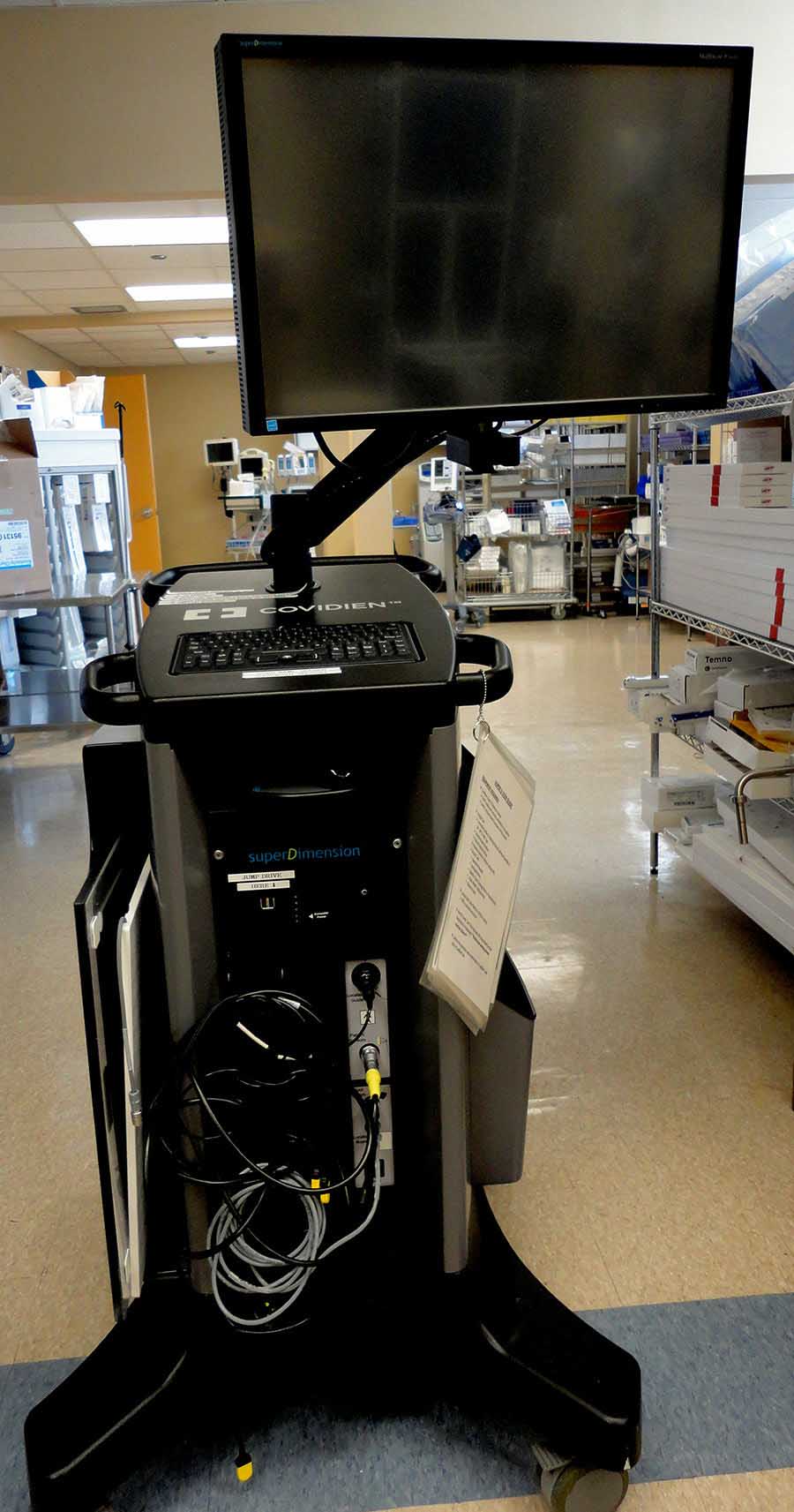Innovative Technology for Patients with Suspected Lung Lesions
Jun 25, 2015New minimally invasive technology may help patients with lung cancer receive earlier diagnoses
West Palm Beach, Fla. (June 17, 2015) — Good Samaritan Medical Center’s Comprehensive Lung Health Program now offers minimally invasive procedures using Covidien’s superDimension™ System. With the assistance of the navigation system, LungGPS™, the technology enables physicians to perform Electromagnetic Navigation Bronchoscopy™ (ENB) procedures to obtain lung tissue biopsies from the peripheral regions.
“Lung cancer is the leading cause of cancer-related deaths in the United States, and the challenge of early diagnosis and treatment is more critical than ever,” said Mark Nosacka, Good Samaritan Medical Center’s CEO. “This technology may allow for less invasive treatment options for patients suffering from the deadly disease.”
The superDimension™ is designed so that physicians can navigate and access difficult-to-reach areas of the lungs from the inside, so patients with cancer can receive treatment as soon as possible, and those with benign lesions can avoid unnecessary procedures.
“This significant advancement may aid in the diagnosis of lung cancer and potentially overcome limitations of traditional diagnostic approaches including bronchoscopy, needle biopsy and surgery,” said Dr. Robert Scoma, a thoracic and cardiac surgeon on the medical staff at Good Samaritan Medical Center. “The system is designed to guide surgeons through the complicated web of pathways inside the lungs, so that we’re able to access and sample target tissue throughout the entire lung without surgery or a needle biopsy.”
Many physicians still rely on traditional methods that can be limiting or assume greater risk to the patient. Needle biopsies may cause a collapsed lung and traditional bronchoscopy may cause bleeding, infection, trouble breathing or a low blood oxygen level. Some patients have to undergo an open lung biopsy under general anesthesia – which may result in an infection or an air leak into the chest – just to find out if their lesion is cancerous or not.
The superDimension™ System planning software uses CT scan images to create a 3D bronchial tree of the thousands of tiny pathways to pulmonary targets inside the lungs. The LungGPS™ technology then provides a roadmap that is designed to allow physicians to guide tiny tools through the lung pathways so they can take tissue samples of the lesion and place markers for future treatment.
As a leading regional oncology center, The Cancer Institute at Good Samaritan Medical Center is dedicated to providing comprehensive cancer diagnosis, treatment and recovery services. The hospital’s multidisciplinary team includes medical oncologists, radiation oncologists and surgical oncologists whose goal is to restore health and hope, while treating patients and their families with support and compassion.
About the superDimension™ Navigation System
The superDimension™ navigation system is approved by the U.S. FDA and its clinically proven technology aids with the diagnosis of peripheral lung lesions in 80-94% of cases4. More than 50,000 patients have had a lung procedure at one of the leading medical facilities worldwide that uses the superDimension™ navigation system powered by LungGPS™ technology.


